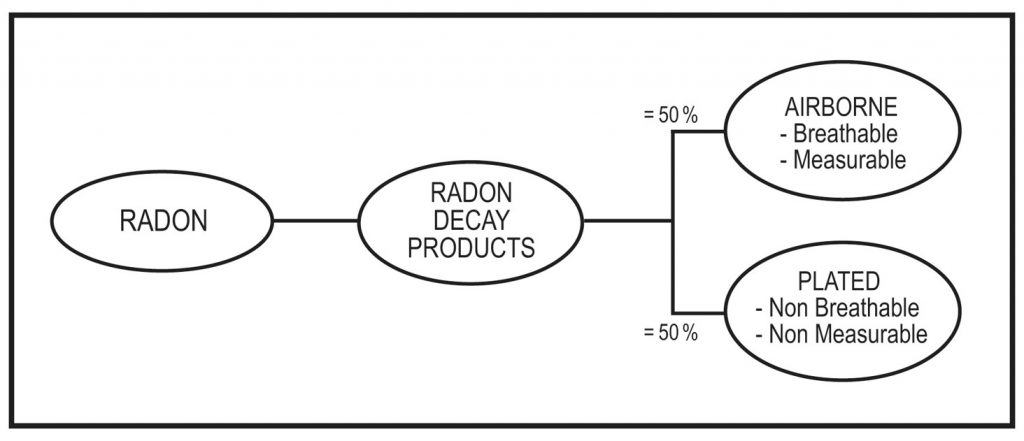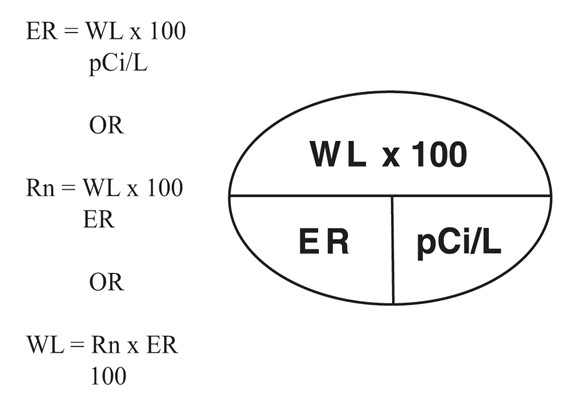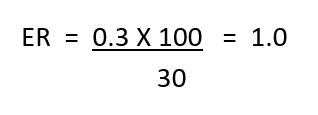Equilibrium Ratio
This is the state of indoor air in which radon has reached a balanced concentration of RDPs produced to RDPs lost [through plate-out and ventilation]. Plate-out and ventilation occur as decay products are either ventilated by air leakage and mechanical appliances or when the RDPs cling to (plate-out) walls, floors or other solid objects.
For measurement purposes, dynamic equilibrium is referred to as Equilibrium Ratio (ER) and can be calculated as follows:
If the ER is known, the equation can be converted 3 different ways to determine working level and radon concentrations:
For example, if the radon concentration is 30 pCi/L and the RDP concentration is 0.3 WL, the ER would be calculated as such:
However, an equilibrium ratio of (1) does not occur in real situations because ventilation and air leakage remove both radon and its decay products. It also takes time for new radon to produce its decay products, of which, many will plate-out or cling to walls, furniture or other solid objects. Although the radon concentration remains unchanged, the ER will be less than 1.
Factors Affecting Equilibrium Ratio (ER)
It is important to study the dynamic relationship between radon and its decay products in order adequately measure their equilibrium ratio and subsequent contribution to indoor air. However, measuring radon and RDPs in the indoor air is a complex and variable process. In a controlled laboratory environment, measuring radon will produce much different results than measuring radon in a home where the physical conditions can change dramatically. For example, air might be filtered by a furnace or air conditioning unit, which would remove some of the decay products. Air leakage, ventilation or plate-out could also remove some RDPs from the air. Figure 4-6.

Plate-out vs Measurable/Breathable RDPs
An unexpectedly high ER in a house indicates a stable indoor environment with little indoor air movement to remove decay products and/or a high degree of dust, smoke or humidity in the air. Conversely, an unexpectedly low WL ratio suggests a high degree of air movement or ventilation removing decay products. If there is only radon-222 present (no RDPs) an ER above 1 is impossible. This indicates a problem with the measurement device or interference from other isotopes such as thoron.
The best conditions under which this study should occur is after the entry rate of radon has stabilized. It takes approximately twelve hours after closed building conditions have been initiated to achieve this stable state of radon and RDPs. We call this steady-state of radon entry Dynamic Equilibrium.



